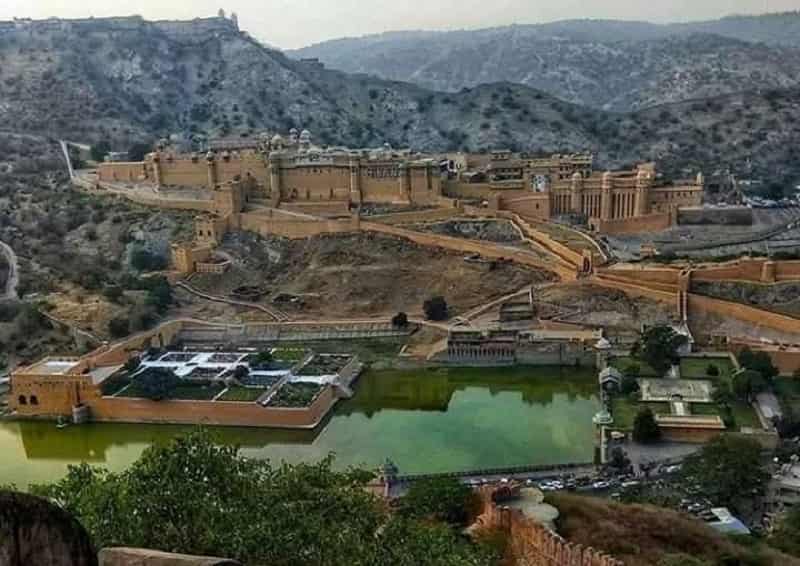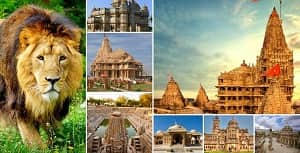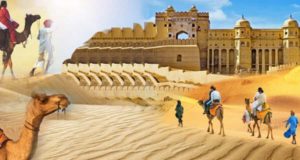Amber Fort – An Eclectic Delight
All the kings of the ancient times were famous for maintaining a coveted level of royalty and sophistication. The kings were not just concerned about their family, but for all the people who used to live in their kingdom. The safety and well being of all the families living in the kingdom were the primary responsibilities of every king. Each king executed this responsibility and guarded his kingdom by constructing a fort. These forts were not just residential spaces, but also served as a base for the military forces of the kingdom. A very famous fort of the ancient period that narrates a tale of how the king used to reign over the kingdom is the Amer Fort or Amber Fort of Rajasthan.

Location
The Amber Palace is built atop a hill in the Amer town, at a distance of just 6.8 miles from the city of Jaipur. In the ancient times, Amer was the capital city of the kingdom, and thus the emperor decided to construct the fort here.
The fort is a vast expanse, a perfect combination of Hindu and Rajput architecture and designing styles. A four level layout plan, relevant to the needs of the royal family and the functioning of the kingdom, is a unique characteristic of the fort.
History
Built in 1592 by Raja Maan Singh I, the fort was expanded by Jai Singh I, a descendant of Man Singh and by other rulers of Amer. The fort was deserted when the last rulers of the kingdom, Kachwahas, moved to Jaipur in 1727. The fort, however, is still intact with very minor damages.
Structure
The four level layout of the palace divides it into four sections. Each section of the palace has a separate gate and a courtyard. The entry point of the fort is through Suraj Pole, which translates to the “Sun Gate”. The name of this gate comes from the fact that it opened to the East, facing the sun. This gate leads to the Jaleb Chowk (square), where the army troops used to celebrate the victory by parading and displaying the bounty they had won in the war.
The First Courtyard
The pathway from the Jaleb Chowk leads to the first courtyard in the fort. This courtyard was built during the period Sawai Jai Singh ruled Amer. The temple of Sila Devi is also located at the right of the stairs that go all the way up to the palace grounds. The legend goes that when Maharaja Maan Singh sought blessings from Kali to win a battle, the goddess turned up into his dream and instructed him to install the idol, which he would retrieve from the sea. The king did so after winning the battle, along with a carving of Lord Ganesha at the temple’s entrance.
A different legend associated with the installation of the idol is that Raja Man Singh was gifted with a slab of black stone on which Kansa killed the siblings of Lord Krishna according to the Mahabharata. Upon receiving this gift, Man Singh returned the kingdom of Bengal which he had won in a war previously. An image of Mahishasurmardini, a form of Goddess Durga, was carved on the stone, which later was installed in the temple.
The Second Courtyard
The second courtyard of the fort is where the king used to conduct the proceedings and listen to the petitions and grievances of the public. It was called Diwan-e-Aam.
The Third Courtyard
The third courtyard of the fort was where the private quarters were built for the king and his family, along with those meant for the attendants. Ganesh Pol (Ganesh Gate) leads to this part of the fort. Ganesh Gate is a well decorated with mosaics and sculptures. Two buildings, Jai Mandir and Sukh Mahal, stand opposite to each other and are separated by a garden built in close resemblance to the Mughal Gardens.
The temple, Jai Mandir, is decorated with convex mirrors on the ceiling that glittered when the candles were put on due to covering of coloured foils and paint applied over them. It was called Sheesh Mahal (Palace of Mirrors) due to the extensive mirror work. Another distinguishing feature of this part of the fort is the carving of a flower on a marble with two butterflies. Using your hands to hide a certain part of the carving, you will figure out that within the carving, there are different shapes that depict a fish tail, hooded cobra, lotus, elephant’s trunk, lion’s tail, a scorpion, and a cob of corn.
The Sukh Mahal is equipped with piped water supply within the structure that helps to keep the hall area cool. The water from these pipelines was further directed towards the garden.
The third courtyard is where the Palace of Raja Man Singh I is. It took twenty-five years to construct this palace. It is the oldest part of the fort and is extensively decorated, resembling the taste of the king.
The Fourth Courtyard
This portion of the fort was residence of the royal women and the mistresses of the king. Female attendants also used to live here. Like all other residential spaces within the fort, this too was made in a stylish manner.
What to Do
The fort is still in a good condition and is open for visitors all year long. You can explore various parts of the fort. The fort offers a magnificent view of the hills, nearby area, and the lake and garden below the fort.
Eat, Drink, Collect
You can purchase carpets, leather goods, handicrafts, jewelery, and various other collectibles from Jaipur.
You can head to 1135 AD at Jaleb Chowk to taste the authentic Rajasthani cuisine. Around the fort area, there are several outlets that serve Rajasthani, North Indian, South Indian, and several other cuisines.
Best Time to Visit
The best time to visit this fort is between October to March. During this period, the climate is cool and it will be easier for you to explore the fort and nearby areas without sweating yourself.
How to Reach
Amber Fort is not very far from Jaipur, which is a bustling town of Rajasthan. It is connected to all major parts of India by rail, road, and air transport. Jaipur is the only city of Rajasthan which has an international airport. So it is easy for the tourists from other countries to visit this fort and the nearby attractions without spending much time on travel.


